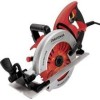Craftsman 28195 Product Manual - Page 12
Set: The distance
 |
View all Craftsman 28195 manuals
Add to My Manuals
Save this manual to your list of manuals |
Page 12 highlights
Always check the tool for damaged parts. Before further use of the tool, a guard or other part that is damaged should be carefully checked to determine if it will operate properly and perform its intended function. Check for misalignment or binding of moving parts, breakage of parts, and any other condition that may affect the tool's operation. A guard or other part that is damaged should be properly repaired or replaced at a Sears Service Center. Inspect lumber and remove all nails from lumber before sawing. Save these instructions. Refer to them frequently and use them to instruct others who may use this tool. If someone borrows this tool, make sure they have these instructions also. Arbor: The shaft on which the cutting tool is mounted. Also called the Spindle. Bevel Cut: A cutting operation made with the blade at any angle other than 90 ° to the plane of the workpiece. Chamfer Cut: A cut removing a wedge from a block of wood so that the end (or portion of the end) is angled other than 90 ° . Compound Miter Cut: A cut with both a bevel angle and a miter angle. Cross Cut: A cutting or shaping operation made against the grain of the workpiece. Dado Cut: A non-through cut that produces a square-sided notch or trough in the workpiece (requires a special blade). Gum: A sticky, sap-based residue from hardwoods. Hypoid Gear: Specially machined gearing for efficient power transfer. Kerr: The material removed by the blade in a through cut, or the slot produced by the blade in a non-through cut or partial cut. Kickback: A hazard that can occur when the blade binds or stalls, throwing the cutting tool back towards the operator. Miter Cut: A cutting operation made with the blade at any angle other than 90 ° to the fence. Non-Through Cuts: Any cutting operation where the blade does not extend completely through the thickness of the workpiece, such as a dado cut. Resin: A sticky, sap-based substance that has hardened. Revolutions per Minute (RPM): The number of turns completed by a spinning object in one minute. Ripping or Rip Cut: A cutting operation along the length of the workpiece. Saw-Blade Path: The area over, under, behind, or in front of the blade, as it applies to the workpiece, or the area that will be or has been cut by the blade. Set: The distance that the saw-blade tooth is bent (or set) outward from the face of the blade. 28195 Manual_Revised_07-0623 Page 12















